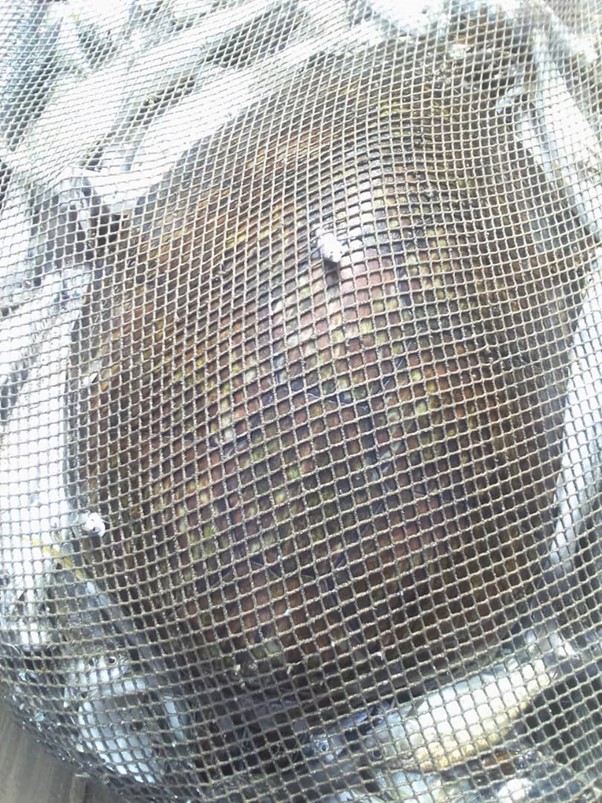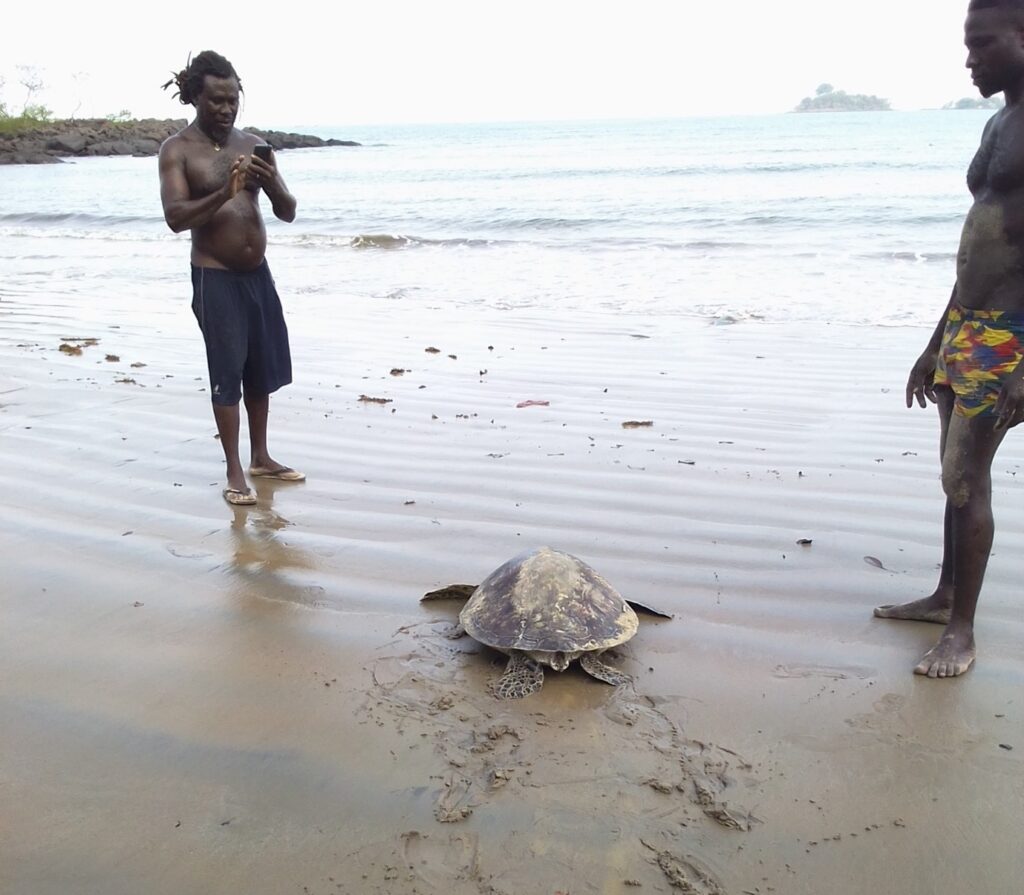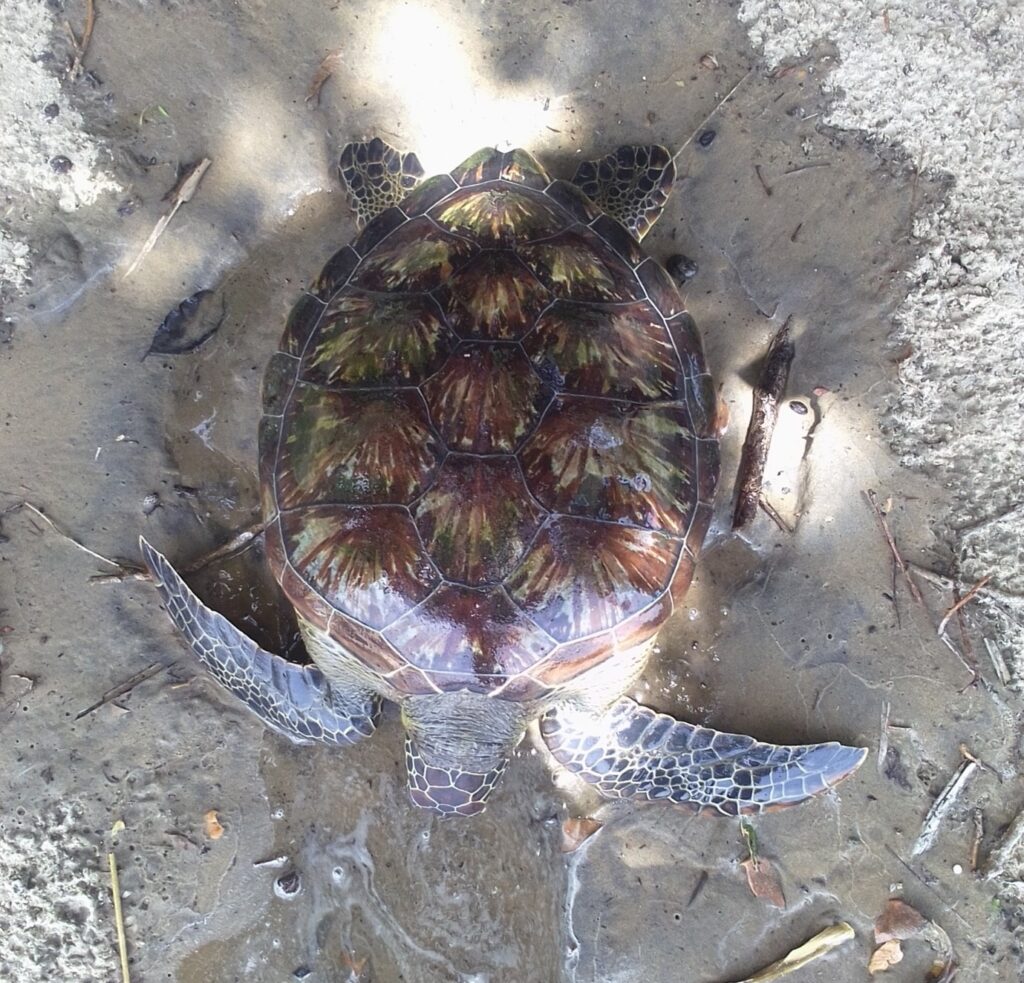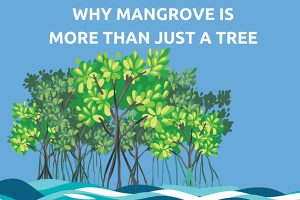Black Johnson Beach south of Freetown is one of the special places we can find in Sierra Leone. The beach and its forest are the home of many rare species. Water turtles are found there as well as many birds, reptiles and amphibians. Our friends Tito and Jane who live at Black Johnson shared their amazing adventures of rescuing two turtles and a Cormoran in the last weeks.
Successful Rescues - Helping to protect animals of Sierra Leone
My name is Tommy Gbandewa, everyone calls me Tito. I would like to tell everybody about our rescuing project and just how good it feels to succeed in releasing a beautiful animal back into the wild. It’s one of the best feelings in this world.
I am a fisherman and I have also been working with tourists in Sierra Leone, since before the war. I was born and grew up in Bureh Town, then moved and worked in Kent doing tourism and fishing before finally getting my own place and boat in Black Johnson beach which is part of Whale Bay in 2009.
I live there and do my business with my wife Jane Aspden Gbandewa. We both love this whole area, especially the sea and the forest. It’s our life. Being a fisherman, I know what different species are in the water. I have seen all five of the protected turtles that come to Sierra Leone.
Earlier this year I became a volunteer monitor for the Reptile and Amphibian Program-Sierra Leone (RAP-SL). My boss is Mr. Eddie Aruna, Sierra Leone’s turtle expert without doubt. I attended a training course at RAP-SL’s office.
My main mission as a volunteer is to look out for turtle nesting sites. I know we have at least two probably three or more nesting sites because I have seen them in the past. As well as that I have to look for turtles that have been caught in the nets of the fishermen.
If this happens, I have to ask them to give them to me so if they are alive, I can record them then release them back into the sea. If they are already dead, I must record them and bury them carefully and mark the place.
I call this Rescue, Release, Respect.
I want to tell everyone about how successful this has been. I will tell you about the two turtles and the one beautiful cormorant that we rescued over the last two months.
April 24, 2022: Turtle Rescue No 1
In the early morning the fishing boat from John Obey had come. I had already put the fishing boats that work this bay on turtle alert. This was the day and tide when it happened. I went out to help with the final draw of the fishing, to examine the catch for turtles as well as buying fish for us and our visitors.
When the cotocou (the small bag at the very end of the draw chain) was finally landed it was clear that a turtle was part of the catch.
This was a critical moment. Although it’s illegal to kill or injure turtles in Sierra Leone, they are still very sellable because people buy and eat them.
This put me into a dilemma. I wanted that turtle to release it back into the sea and document it. The fishermen wanted their earnings. I gave in on this occasion and agreed a price to buy it because it was the first one I had saved and I wanted to set it free.

Right or wrong? All I can say is it was a decision made quickly and easily as a “one off”, even though I know it’s not the ongoing solution. I am a fisherman myself and I know they need to sell the catch to earn money.
White Boy and I arranged for one of the fishermen to carry it over nearer to our beach, to a place that it would be easier to set free. He toted it upside down on his head, which was how I had been trained to carry the big turtles.
The fisherman was left guarding it whist I went to tell Jane and some of our visitors. I was very excited. Jane and three of our visitors came to watch and record the release.
As soon the fishermen and I turned it over it struck out for the sea. No hesitation at all, it definitely knew its way and was on a mission.


As it almost reached the sea with waves lapping around its head every now and then, it stopped for a moment seeming exhausted. The fisherman and I gave it a helping hand into the start of the waves.
Then it revived and speeded up its journey making amazing roaring noises as it rejoined the ocean. The noise was like it was scared and also it was happy to be back in the sea.
Finally, we filmed it as it swam into the sea, down, down, down and away. I felt so good when I saw it swim off. To save a life, animal or human being you must be proud for that.
May 6, 2022: Turtle Rescue No 2
I went to help with the draw chain. I was on the chain the whole time. There was a turtle in the catch. Everyone said we have to give that to Tito. “Look he’s here”. Some people said they wanted it to make Pepper Soup but they agreed to give it to me because I hade been on the chain.
I carried the turtle back to our side of the beach. It was much smaller than the last turtle so I could just carry it in my hands. It was another beautiful Green Turtle.

I called my wife. She came and measured it for the records.
Then I carried it down to near the sea but it didn’t want to move so I helped it to the sea. As soon as it was in the water it just swam directly and with speed. It disappeared rapidly into the sea. I felt very good when it went off so quickly. It is such a good feeling when the turtle swims off back into its home.
May 9, 2022: Cormorant Rescue No 1
On this evening my wife, Jane went for a long swim to the far beach. When she came back, she went to the waterside to rinse off in fresh water. She saw quite a big a bird fluttering in a tree on the other side of the pool. She came to me and asked me to come and look. She thought it was having some difficulty. I went and saw the bird. It looked as though it was trapped in the bushes. It kept fluttering about.
I called one of the men who was down by our beach. He went to have a look whilst I filmed what was happening.
He found that the bird had swallowed a fish that was attached to a line. He untangled it and brought it back to our side of the water. The bird was very frightened. Another man down by the waterside asked if he could be given the bird to eat. I said we must take it back and put it under a bligh for sometime to let it calm down.
We made sure its legs and wings were not injured and took it back to give it a rest. It stayed under the bligh for around 15 minutes and it became quiet. Then we lifted the bligh and it flew off with speed. It was fully recovered. One of our dogs ran after it but it was too quick and flew into the air.
We did not know what kind of bird it was so we sent the videos to CSSL. It was identified as a Reed or long – tailed Cormorant. It frequents fresh and brackish water. It predominantly feeds on fresh fish. Adult birds have beautiful red eyes. Thanks to CSSL for identification.
I just want everyone to know what a great feeling it is when you make a successful rescue of an animal and return it to its own natural habitat. To save life is a wonderful feeling let everyone join in to do that.
The importance of protecting Black Johnson and how to treat them respectfully
As well as the turtles, I have seen all five of the protected sharks of West Africa in this bay and the two protected rays. We have dolphins come into the bay and Hump Back Whales arrive to breed in their breeding season, which is rainy season time. They are only 5 – 10 kilometers away.
We have had Pangolins come to us out of the forest. Monitor Lizards, rare frogs, Chameleons, Vernon Monkeys, Spot nosed Guenon and African Civets are all part of the forest and our lives. Crocodiles and jumping fish live if our freshwater area. My son saw a West African Manatee in Mammy River at Big Water. These are a hugley protected species.
This bay and this forest area is a very special place with mangroves and wetlands as well as the beach and forest giving us five different ecosystems with such an abundance of birds that inhabit these different areas. We cannot afford to ignore these very special sites of environmental interest.
I want to encourage everyone to help wherever they find a wild animal in distress. You too can help but you must be careful in how you do this.
How to react when you find an animal in danger:
- Don’t put yourself in danger.
- Treat the animal with respect and dignity.
- If it’s injured try and get help or amend it yourself.
- Keep it calm as much as possible.
- Speak very quietly
- Handle it gently but firmly
- Always think “how can I release this back to its home?”
- If that is not possible and it dies bury it with respect.
Remember: Rescue, Release, Respect.
Goodbye friends.
Tito (and Jane)



